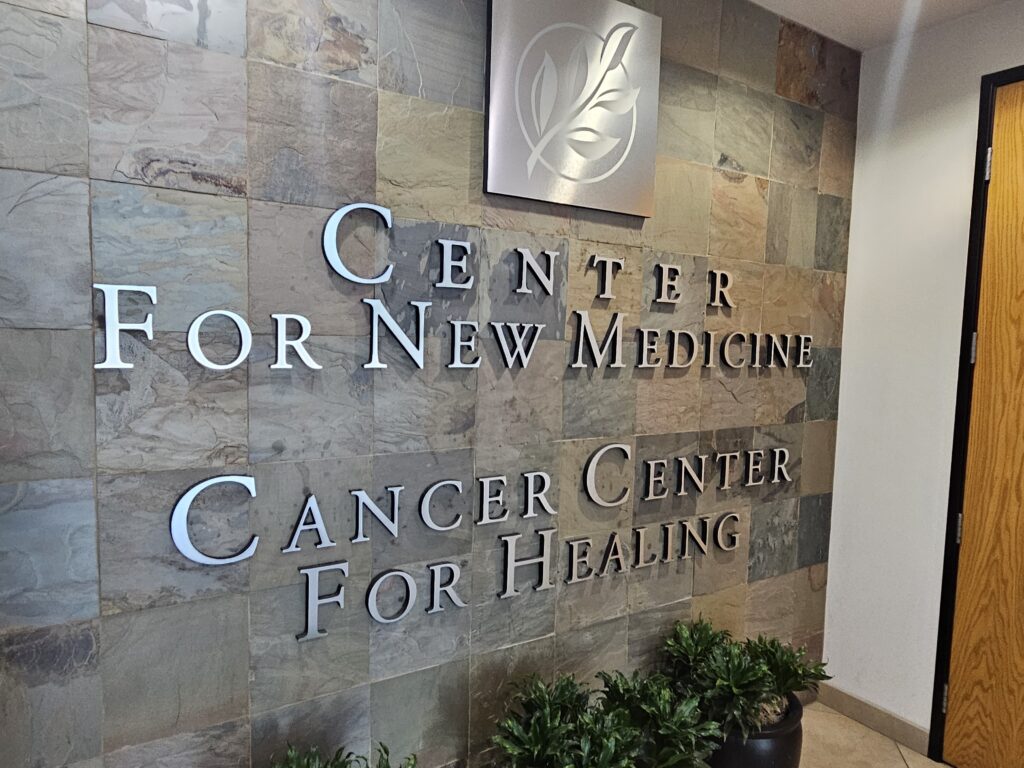The head and neck cancer ribbon has become a powerful symbol of support and awareness for individuals facing this challenging disease. Head and neck cancer refers to a group of cancers that occur in the mouth, throat, nasal cavity, and surrounding areas. Although head and neck cancer can be difficult to detect in its early stages, timely diagnosis and treatment can significantly improve outcomes.
By raising awareness and showing solidarity, individuals can make a positive impact on the lives of those affected by head and neck cancer. The head and neck cancer ribbon serves as a reminder of the importance of supporting patients and advocating for improved care.
Key Takeaways:
- The head and neck cancer ribbon is a symbol of support and awareness for individuals facing head and neck cancer.
- Head and neck cancer refers to a group of cancers that occur in the mouth, throat, nasal cavity, and surrounding areas.
- Timely diagnosis and treatment are vital in improving outcomes for head and neck cancer patients.
- Raising awareness and showing solidarity can have a positive impact on the lives of those affected by head and neck cancer.
Understanding Head and Neck Cancer
Head and neck cancer is a type of cancer that develops in the tissues and organs of the head and neck, including the throat, tongue, tonsils, sinuses, and salivary glands. It can also occur in the nasal cavity and the larynx. According to the American Cancer Society, an estimated 65,410 adults in the United States were diagnosed with head and neck cancer in 2021.
Causes and Risk Factors
The exact cause of head and neck cancer is unknown, but certain factors can increase a person’s risk of developing the disease. These include tobacco use, alcohol consumption, exposure to certain viruses (such as human papillomavirus or HPV), prolonged sun exposure, and a weakened immune system.
Types of Head and Neck Cancer
There are several types of head and neck cancer, which are categorized based on the area of the head or neck where they occur. These include:
| Type of Cancer | Location |
|---|---|
| Oral cavity cancer | Lips, gums, tongue, and roof or floor of the mouth |
| Oropharyngeal cancer | Tonsils, base of the tongue, and back of the throat |
| Nasopharyngeal cancer | Nasal cavity and the upper part of the throat, behind the nose |
| Laryngeal cancer | Voice box, or larynx |
| Hypopharyngeal cancer | The lower part of the throat, near the esophagus |
| Salivary gland cancer | Parotid gland, submandibular gland, and sublingual gland |
Symptoms and Early Detection
Symptoms of head and neck cancer can vary depending on the location and stage of the cancer, but common signs include a persistent sore throat, difficulty swallowing, a lump in the neck, hoarseness, and persistent nasal congestion or facial pain. Early detection is crucial in treating head and neck cancer, so it’s important to see a doctor if you experience any of these symptoms.
The Significance of Ribbons in Cancer Awareness
Ribbons have become a widespread symbol of support and awareness for various types of cancer. The trend started in 1979 when Penney Laingen tied yellow ribbons around trees to welcome her husband home from the Iran Hostage Crisis. Shortly after, the yellow ribbon became a universal symbol of hope and freedom.
Since then, different colored ribbons have been adopted to represent various types of cancer, including pink for breast cancer, blue for colon cancer, and orange for leukemia. The head and neck cancer ribbon is burgundy and ivory, representing the colors of the neck and throat.
The use of ribbons is a powerful way to raise awareness and show solidarity with individuals facing cancer. It allows people to visually demonstrate their support for the cause, promoting visibility and conversation around the disease.
Head and Neck Cancer Ribbon: Design and Colors
The head and neck cancer ribbon is a powerful symbol of support and awareness for individuals facing this disease. The ribbon is designed with two colors, burgundy and ivory, representing solidarity with those fighting head and neck cancer.
The ivory color signifies the throat, while the burgundy represents the lining of the mouth. The ribbon’s design, which incorporates a butterfly, symbolizes the transformation of patients and their hope for a new beginning.
The head and neck cancer ribbon is often worn to show support for those affected by the disease. It is also used to raise awareness and advocate for improvements in head and neck cancer care. Through the use of this ribbon, individuals can stand in solidarity with patients and their families, providing a visual representation of support for their fight against cancer.
Supporting Head and Neck Cancer Patients
Support from family, friends, and the community can make a significant difference in the lives of head and neck cancer patients. There are many ways to show support, both emotional and practical, that can help ease the burden of the disease.
Emotional Support
It’s important to let head and neck cancer patients know they are not alone. Simply being there to listen and offer encouragement can make a huge difference. Here are some ways to provide emotional support:
- Visit the patient in the hospital or at home
- Listen attentively to their concerns and feelings
- Offer words of encouragement and hope
- Acknowledge their strength and courage in facing the disease
- Send cards, letters, or care packages to show you care
Practical Support
Head and neck cancer patients may struggle with everyday tasks due to the treatment and the disease itself. Practical support can help ease the burden and make daily life more manageable. Here are some ways to provide practical support:
- Offer to drive the patient to appointments or treatment sessions
- Assist with household chores like cooking, cleaning, and laundry
- Help with errands or grocery shopping
- Provide financial assistance or help with fundraising efforts
- Connect the patient with local support groups or resources
By providing emotional and practical support, individuals can make a significant impact on the lives of head and neck cancer patients. Every act of kindness and solidarity helps to create a community of support and hope for those facing this disease.
Holistic Treatment Modalities at the Cancer Center for Healing
The Cancer Center for Healing, led by Dr. Leigh Erin Connealy, is dedicated to providing patients with comprehensive and individualized cancer care. This includes a focus on holistic treatment modalities that support the body’s innate ability to heal.
One such modality is hyperbaric oxygen therapy, which involves breathing pure oxygen in a pressurized environment. This treatment can improve the body’s oxygen saturation levels, leading to enhanced healing and recovery.
The Cancer Center for Healing also offers supportive therapies such as acupuncture and massage, which can alleviate symptoms such as pain, nausea, and fatigue. These therapies can also promote relaxation and improve overall well-being.
IV Nutrient Therapy
Another important modality is IV nutrient therapy, which involves the administration of vitamins, minerals, and other nutrients directly into the bloodstream. This can optimize nutrient levels and support the immune system, providing the body with the tools it needs to fight cancer.
The Cancer Center for Healing also offers low dose chemotherapy and targeted therapies, which can be administered alongside holistic treatments to create a comprehensive and individualized approach to cancer care.
| Modalities Offered at the Cancer Center for Healing | Benefits |
|---|---|
| Hyperbaric oxygen therapy | Enhanced healing and recovery |
| Acupuncture and massage | Alleviation of symptoms and improved well-being |
| IV nutrient therapy | Optimized nutrient levels and immune support |
| Low dose chemotherapy and targeted therapies | Comprehensive and individualized cancer care |
The Cancer Center for Healing takes a comprehensive and integrative approach to cancer care, recognizing the importance of addressing both physical and emotional needs. They also prioritize prevention and early detection through regular screenings and education.
Schedule a consultation with the Cancer Center for Healing to learn more about their holistic treatment modalities and comprehensive cancer care approach. Contact them at (949) 680-1880.
Comprehensive Cancer Care at the Cancer Center for Healing
The Cancer Center for Healing, located in Irvine, CA, offers a comprehensive approach towards cancer care that focuses on the overall well-being of patients. Under the guidance of Dr. Leigh Erin Connealy, the center integrates conventional and alternative therapies to address the unique needs of each patient.
For head and neck cancer patients, the Cancer Center for Healing provides a range of holistic treatment modalities. These include nutritional therapy, IV therapy, hyperthermia, oxygen therapy, and more. Patients also have access to a team of experienced healthcare professionals who offer emotional support and resources for managing side effects and improving quality of life.
| Comprehensive Cancer Care at the Cancer Center for Healing includes: |
|---|
| – A personalized treatment plan tailored to each patient’s needs |
| – Advanced diagnostic tools and testing |
| – Conventional cancer treatments when appropriate |
| – Alternative and complementary therapies |
| – Nutritional support and counseling |
| – Emotional and psychological support |
The Cancer Center for Healing’s mission is to empower patients with the resources and tools to improve their health and well-being. The center’s comprehensive approach towards cancer care ensures that patients receive a personalized treatment plan designed to address their unique needs and support them throughout their journey towards recovery.
Consultation at the Cancer Center for Healing
If you or a loved one are seeking comprehensive and holistic cancer care, scheduling a consultation at the Cancer Center for Healing could be the first step towards regaining control of your health. Under the guidance of Dr. Leigh Erin Connealy, the Cancer Center for Healing offers personalized treatment plans that integrate conventional and alternative therapies, including nutrition, detoxification, and mind-body medicine.
During the consultation, you will have the opportunity to discuss your medical history, current symptoms, and treatment goals with Dr. Connealy. She will provide a thorough evaluation of your health status and recommend a treatment plan tailored to your needs. The Cancer Center for Healing also offers remote consultations for individuals unable to visit the center in person.
To schedule a consultation or learn more about the Cancer Center for Healing’s approach, please call (949) 680-1880 or visit their website.
Head and Neck Cancer Ribbon: A Powerful Symbol
The head and neck cancer ribbon has become a powerful symbol of support and awareness for those affected by the disease. The use of ribbons as symbols of support for cancer patients has a long history, and the head and neck cancer ribbon is no exception.
By wearing or displaying the head and neck cancer ribbon, individuals can show solidarity with those facing head and neck cancer. This can provide significant emotional support for patients and their loved ones, as they navigate the challenges of diagnosis, treatment, and recovery.
In addition, the head and neck cancer ribbon serves as an important tool in raising awareness about the disease. This can help promote early detection and treatment, which can significantly improve outcomes for patients.
Overall, the head and neck cancer ribbon is a powerful symbol of support and awareness, representing the courage and resilience of those facing head and neck cancer. By wearing or displaying the ribbon, individuals can join the fight against the disease and show their commitment to improving the lives of those affected.
The Role of Education in Head and Neck Cancer Awareness
Educating the public about head and neck cancer is crucial to raising awareness and dispelling myths surrounding the disease. Early detection and diagnosis are key factors in ensuring successful treatment outcomes, yet many people are unaware of the warning signs and risk factors associated with head and neck cancer.
By providing accurate and accessible information, healthcare providers and organizations can help individuals understand the importance of regular check-ups, self-examinations, and seeking medical attention if they notice any unusual symptoms.
Education can also help combat stigmas associated with head and neck cancer, such as the misconception that the disease is only caused by smoking. By highlighting the various risk factors, including alcohol use and the human papillomavirus (HPV), individuals can be better equipped to make informed decisions about their lifestyle and health.
Moreover, education can empower individuals to become advocates for head and neck cancer awareness. By spreading accurate information through social media, community events, and other platforms, individuals can help reduce the stigma surrounding the disease and encourage others to seek medical attention if necessary.
The Importance of Healthcare Provider Education
Healthcare providers also play a critical role in educating their patients and the public about head and neck cancer. By staying up-to-date with the latest research and treatment options, healthcare providers can provide their patients with accurate and personalized information about their condition.
Well-informed healthcare providers can also help reduce disparities in access to care by identifying and addressing barriers to treatment, such as language barriers and transportation limitations.
Ultimately, education is a powerful tool in the fight against head and neck cancer. By increasing awareness and understanding of the disease, individuals can better protect themselves and support those affected by this devastating illness.
Promoting Head and Neck Cancer Ribbon Campaigns
There are several ways in which individuals and organizations can promote head and neck cancer ribbon campaigns to increase awareness.
1. Social Media Campaigns
Social media is an excellent tool for promoting head and neck cancer ribbon campaigns. Individuals can use their social media accounts to share their stories, post educational content, and spread awareness of the disease. Organizations can run social media campaigns, using hashtags and other creative ideas to engage with their followers and promote the cause. Social media can also be used to organize and promote fundraising events, with the goal of raising money for head and neck cancer research.
2. Fundraising Events
Fundraising events are an effective way to raise money for head and neck cancer research, while also raising awareness of the disease. Events such as walks, runs, and cycling races can bring together individuals and organizations to support the cause. Other fundraising events can include charity auctions, benefit concerts, and bake sales. These events can be organized by individuals or organizations, with the goal of raising money and educating the community on the importance of head and neck cancer awareness.
3. Collaborations with Healthcare Organizations
Collaborations with healthcare organizations can also help to promote head and neck cancer ribbon campaigns. Organizations such as hospitals, clinics, and cancer centers can partner with individuals and groups to organize events, share educational content, and provide support for those affected by the disease. These collaborations can also lead to increased funding for research and advancements in head and neck cancer treatment.
Overall, promoting head and neck cancer ribbon campaigns is essential for increasing awareness of the disease, supporting those affected, and advancing research and treatment options. Individuals and organizations can make a significant impact by using social media, organizing fundraising events, and collaborating with healthcare organizations to spread the word about the importance of head and neck cancer awareness.
Advocacy and Support Organizations for Head and Neck Cancer
Advocacy and support organizations for head and neck cancer play a crucial role in providing resources to patients, survivors, and caregivers. These organizations aim to improve outcomes, raise awareness, and advocate for better care and treatment options. Here are a few reputable organizations that offer support and resources for individuals affected by head and neck cancer:
| Name of Organization | Description | Website |
|---|---|---|
| Head and Neck Cancer Alliance | The Head and Neck Cancer Alliance provides support, education, and advocacy for patients with head and neck cancer. | https://headandneck.org/ |
| Oral Cancer Foundation | The Oral Cancer Foundation is a non-profit organization that provides information and support to patients and survivors of oral and oropharyngeal cancer. | https://oralcancerfoundation.org/ |
| Support for People with Oral and Head and Neck Cancer (SPOHNC) | SPOHNC provides support and education to patients, survivors, and caregivers of oral, head, and neck cancer. | https://www.spohnc.org/ |
| Thyroid Cancer Survivors’ Association | The Thyroid Cancer Survivors’ Association provides support, education, and awareness for individuals affected by thyroid cancer. | https://www.thyca.org/ |
| Cancer Support Community | The Cancer Support Community provides support and resources for all types of cancer, including head and neck cancer. | https://www.cancersupportcommunity.org/ |
These organizations not only provide important resources but also help to create a sense of community among patients, survivors, and caregivers. Their efforts are crucial in raising awareness and advocating for better care for individuals facing head and neck cancer.
Personal Testimonials: Inspiring Stories of Survival
Head and neck cancer can be a difficult diagnosis to receive, but personal stories of survival and resilience offer hope and inspiration to those facing the disease. These are just a few examples of individuals who have battled head and neck cancer and come out on the other side.
“Being diagnosed with head and neck cancer was a shock, but I was determined to fight. I had an amazing support system and received top-notch treatment at a cancer center that embraced a holistic approach. Today, I am cancer-free and grateful for every moment.”
– Jane, Head and Neck Cancer Survivor
Jane’s experience highlights the importance of emotional support and comprehensive cancer care in the journey towards recovery. For others like her, finding a treatment center that emphasizes the whole person can make all the difference.
“I was scared when I found out I had head and neck cancer, but my faith and the support of my family helped me stay strong. I also found comfort in connecting with others who had similar experiences through a local support group. Now, I am a survivor and an advocate for raising awareness.”
– Michael, Head and Neck Cancer Survivor
Michael’s story underscores the importance of community and connection during a challenging time. Support groups and advocacy organizations can play a vital role in providing resources and a sense of belonging to those facing head and neck cancer.
These personal testimonials demonstrate the power of resilience, hope, and support in the face of head and neck cancer. They serve as a reminder that no one is alone in this fight, and that there is always reason to keep fighting.
The Future of Head and Neck Cancer Awareness and Research
Advancements in technology and research have led to significant improvements in the diagnosis and treatment of head and neck cancer. However, there is still much to be done in terms of raising awareness, funding research, and improving overall care for patients.
One promising area of research is immunotherapy, which harnesses the power of the immune system to fight cancer cells. Clinical trials have shown promising results in treating head and neck cancer with immunotherapy, and this approach may become a standard part of treatment in the future.
Additionally, efforts are being made to develop more personalized treatment plans based on a patient’s specific genetic makeup and tumor characteristics. This precision medicine approach holds great promise for improving outcomes and reducing potential side effects.
Another area of focus is survivorship care, which addresses the physical, emotional, and practical needs of cancer survivors. This may include rehabilitation, psychological support, and assistance with navigating the healthcare system.
As we look towards the future of head and neck cancer awareness and research, it is clear that collaboration and funding will play crucial roles in making progress. Individuals, organizations, and healthcare providers must continue to work together to raise awareness, provide support, and fund research towards the ultimate goal of eradicating head and neck cancer.
Taking Action: Join the Fight Against Head and Neck Cancer
Becoming involved in the fight against head and neck cancer is a powerful way to show support for those affected by the disease. There are several ways to take action, no matter how big or small the effort.
- Spread the word: Share information about head and neck cancer and the significance of the ribbon on social media. Educate friends and family about the importance of early detection and treatment.
- Volunteer: Many advocacy and support organizations rely on volunteers to assist with fundraising events, patient support, and other initiatives.
- Donate: Supporting organizations that focus on head and neck cancer research and patient care can make a significant difference in the lives of those affected. Every dollar counts, and donations of any amount are always appreciated.
- Advocate: Contact local government officials or healthcare organizations to advocate for policies and resources that support head and neck cancer patients and their families.
Joining the fight against head and neck cancer can make a difference in the lives of those affected by the disease. With increased awareness, research, and support, there is hope for better outcomes and brighter futures for those battling head and neck cancer.
Conclusion
The head and neck cancer ribbon serves as a powerful symbol of support and awareness for individuals facing this difficult disease. Through raising awareness, providing emotional and financial support, and advocating for improvements in cancer care, we can make a difference in the lives of those affected.
The Cancer Center for Healing provides a comprehensive and holistic approach to cancer care, supporting the overall well-being of patients with head and neck cancer. With ongoing research advancements and breakthroughs, there is hope for a brighter future for those facing this disease.
By joining the fight against head and neck cancer, we can make a difference. Together, let us continue to educate, inspire, and support those affected by this disease.
FAQ
Q: What is the significance of the head and neck cancer ribbon?
A: The head and neck cancer ribbon is a symbol of support and awareness for individuals affected by the disease. It serves as a visual representation of solidarity with those facing head and neck cancer.
Q: What is head and neck cancer?
A: Head and neck cancer refers to a group of cancers that occur in the mouth, throat, nose, sinuses, and salivary glands. It can affect various structures in the head and neck region and requires early detection and treatment for better outcomes.
Q: Why are ribbons important in cancer awareness?
A: Ribbons have become significant symbols in cancer awareness campaigns. They help raise awareness, show support for those affected, and serve as a reminder of the ongoing fight against cancer.
Q: What do the colors of the head and neck cancer ribbon represent?
A: The head and neck cancer ribbon typically consists of burgundy and ivory colors. Burgundy represents solidarity and support, while ivory symbolizes the strength and resilience of individuals battling head and neck cancer.
Q: How can I support head and neck cancer patients?
A: There are various ways to support head and neck cancer patients. You can offer emotional support, participate in fundraising events, spread awareness through social media, and educate others about the disease.
Q: What holistic treatment modalities are offered at the Cancer Center for Healing?
A: The Cancer Center for Healing, led by Dr. Leigh Erin Connealy, offers a range of holistic treatment modalities for cancer patients, including head and neck cancer. These modalities integrate conventional and alternative therapies to support patients’ overall well-being.
Q: How can I schedule a consultation at the Cancer Center for Healing?
A: To schedule a consultation at the Cancer Center for Healing or seek further information, you can call (949) 680-1880. Our team will be happy to assist you.
Q: Why is education important in head and neck cancer awareness?
A: Education plays a crucial role in raising awareness about head and neck cancer. By disseminating accurate information and dispelling myths, we can promote early detection, prevention, and improved outcomes for individuals at risk.
Q: How can I promote head and neck cancer ribbon campaigns?
A: You can promote head and neck cancer ribbon campaigns by organizing social media campaigns, fundraising events, and collaborating with healthcare organizations. The goal is to raise awareness and encourage participation.
Q: Are there advocacy and support organizations for head and neck cancer?
A: Yes, there are advocacy and support organizations dedicated to head and neck cancer. These organizations provide resources, support, and opportunities to contribute to the cause. Reach out to them for guidance and assistance.
Q: Can personal testimonials inspire others in the fight against head and neck cancer?
A: Absolutely. Personal testimonials from individuals who have battled head and neck cancer can offer inspiration, resilience, and hope. They remind us of the importance of support and the strength within each individual.
Q: What is the future of head and neck cancer awareness and research?
A: The future of head and neck cancer awareness and research looks promising. Ongoing advancements and breakthroughs are being made, highlighting the need for continued efforts in raising awareness, funding research, and improving patient care.
Q: How can I take action to join the fight against head and neck cancer?
A: You can take action by getting involved in head and neck cancer awareness campaigns, supporting patients and their families, and advocating for improved healthcare policies and resources. Every small step can make a difference.


















